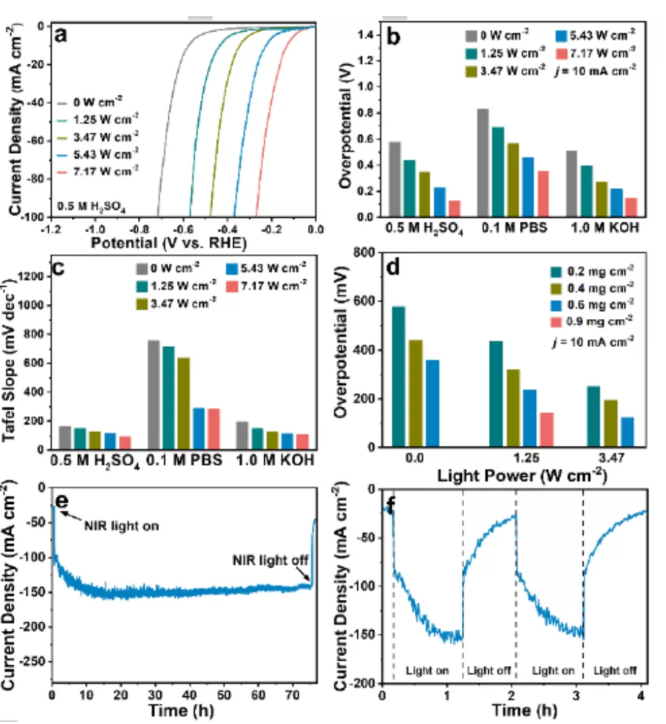

Although MXenes has attracted great attention in catalysis and energy applications, its redox activity is relatively poor.
Recently, Professor Qiu Jieshan from Beijing University of Chemical Technology, researcher Wu Kaifeng from the Dalian Institute of Physics, Chinese Academy of Sciences, and Professor Wang Zhiyu from Dalian University of Technology reported using the plasmon response of electromagnetic waves to improve the intrinsic electrocatalytic activity of MXenes.

Highlights of this article
Key points 1. The study found that in the visible-near infrared region, the thermal plasmon and thermionic effects induced by localized surface plasmon resonance (LSPR) can enhance the electrocatalytic activity of MXene. Thermal plasmon reduces the endothermic enthalpy and potential barrier of HER, causing Ti3C2TxMXene to increase the current by about 40-61% under different pH conditions. In the sub-femtosecond-picosecond time scale, the hot electrons injected at the same time significantly promote the interface charge transfer and reduce the activation energy of the reaction. The FE increases by 20-48%, and it is activated in 0.5 M H2SO4 and 1.0 M KOH. Can reduce 41-65% and 21-36% respectively.
Point 2. The results show that these two effects can increase the HER activity of different types of Mxenes (Nb2CTx, Ti3C2Tx, V4C3Tx) by more than 5 times, and improve the kinetics and Faraday efficiency in the full pH range.

Xianhong Wu, et al, Boosting the Electrocatalysis of MXene by Plasmon-induced Thermalization and Hot-electron Injection, Angew. Chem. Int. Ed., 2021
10.1002/anie.202016181
https://doi.org/10.1002/anie.202016181
Information source: Catalyst
This information is from the Internet for academic exchanges. If there is any infringement, please contact us and delete it immediately





